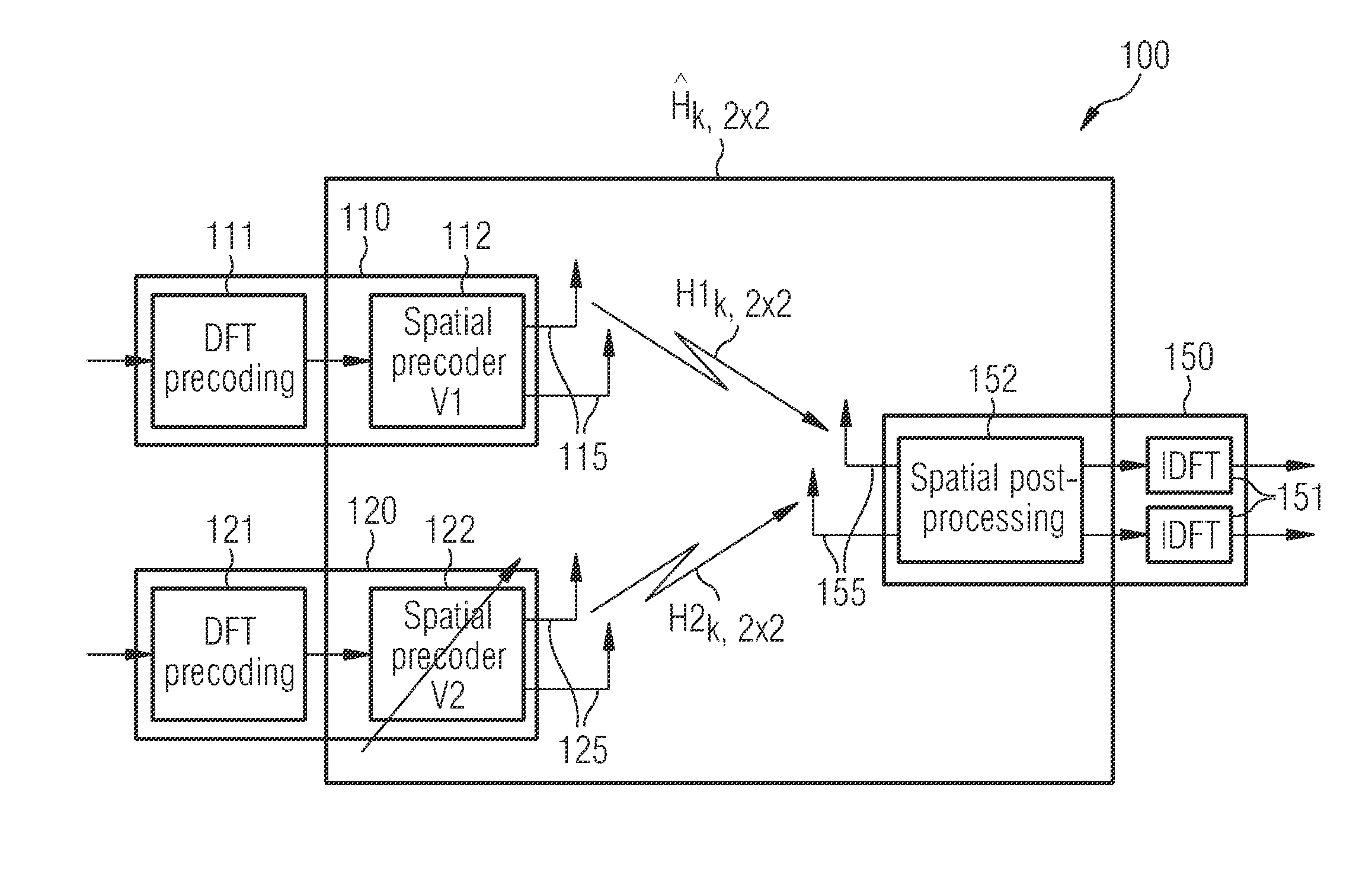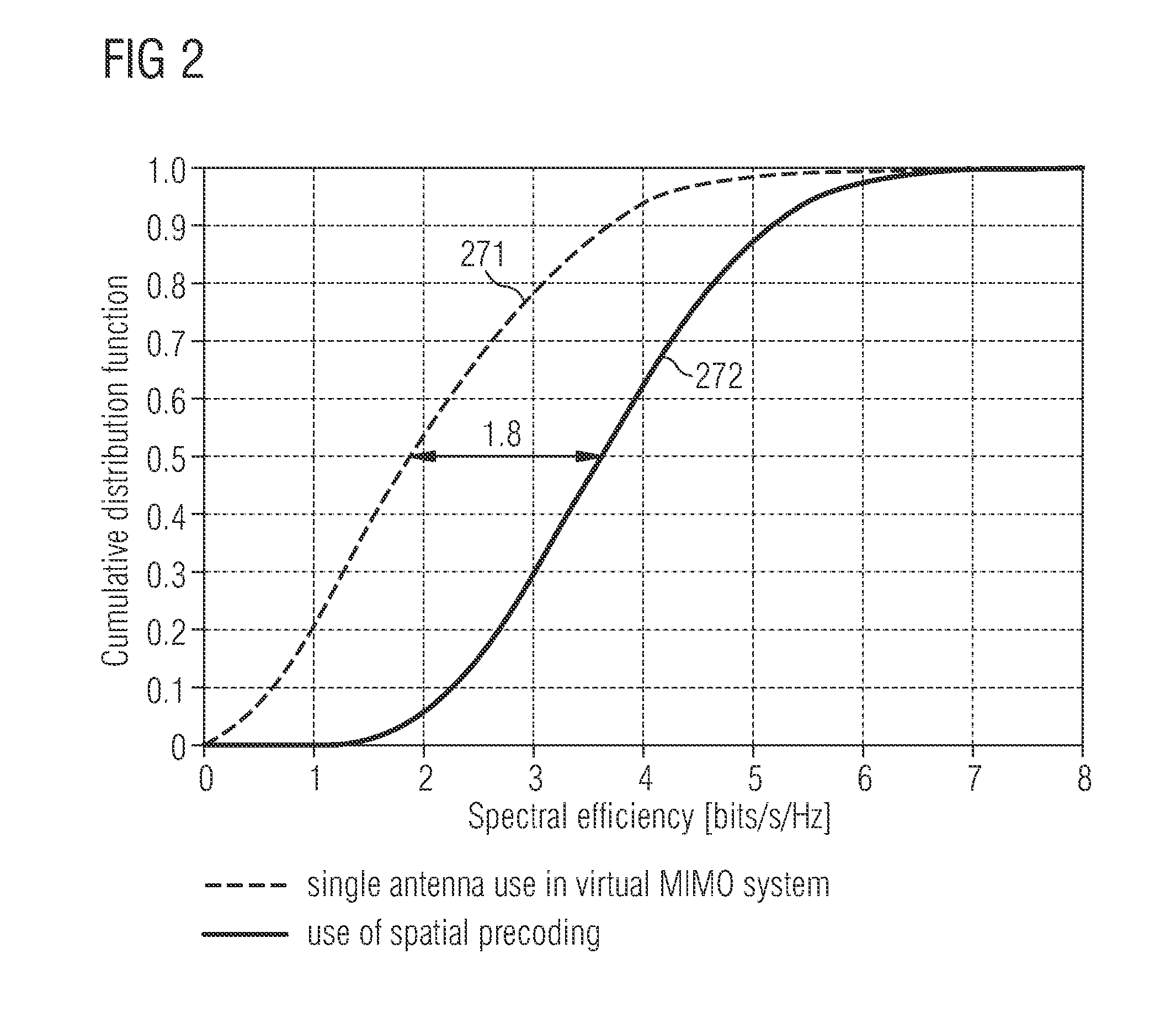Spatial Pre-Coding for Transmitting Data Within a Mobile Telecommunication Network
a mobile telecommunication network and data transmission technology, applied in radio transmission, digital transmission, electrical equipment, etc., can solve the problems of reducing the spectral efficiency, reducing the overall data throughput, and difficult to separate data streams from different antennas by the bs, so as to achieve the effect of avoiding rank deficiency problems, reducing peak-to-average power ratio (papr), and significantly increasing overall data throughput in the uplink
- Summary
- Abstract
- Description
- Claims
- Application Information
AI Technical Summary
Benefits of technology
Problems solved by technology
Method used
Image
Examples
Embodiment Construction
[0062]FIG. 1 shows a mobile telecommunication system 100 in an operational state, in which a multi-user Spatial Division Multiple Access (SDMA) radio transmission is carried out. According to the embodiment described here the telecommunication system is Single Carrier-Frequency Division Multiple Access (SC-FDMA) telecommunication system 100. The SC-FDMA system 100 comprises a first user equipment (UE) 110 and a second UE 120. Further, the SC-FDMA system 100 comprises a Base Station (BS) 150 spanning a non depicted cell and serving the two UEs 110 and 120, which are situated within the cell of the SC-FDMA telecommunication system.
[0063]According to the embodiment described here the first UE 110 is weaker than the second UE 120. This means that the attenuation of a radio signal propagating from the first UE 110 to the BS 150 is larger than the attenuation of a radio signal propagating from the second UE 120 to the BS 150. Therefore, the first UE 110 will also be called a weak UE and t...
PUM
 Login to View More
Login to View More Abstract
Description
Claims
Application Information
 Login to View More
Login to View More - R&D
- Intellectual Property
- Life Sciences
- Materials
- Tech Scout
- Unparalleled Data Quality
- Higher Quality Content
- 60% Fewer Hallucinations
Browse by: Latest US Patents, China's latest patents, Technical Efficacy Thesaurus, Application Domain, Technology Topic, Popular Technical Reports.
© 2025 PatSnap. All rights reserved.Legal|Privacy policy|Modern Slavery Act Transparency Statement|Sitemap|About US| Contact US: help@patsnap.com



